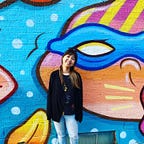Design | Who is our co-designer?
My reflection on how to select community co-designers
Last week, I met with the community non-profit leaders to discuss the high-level plan of the participatory capital pilot. As this plan takes shape, the next step is to invite the community co-designers. For this step, there were some questions we had to answer. How many people are appropriate, what type of people we are looking for, and how would we ultimately select the final team?
How many people should we have?
Before I talk about how we selected community co-designers, I want to talk about why we needed to ‘select’ people (which in a way, exclusive) when our ultimate goal is inclusion.
When designing in an unfamiliar context, as a designer, we start with scouting the landscape (breath) and ultimately diving deep to gain a novel understanding of a problem(depth). This could be an understanding of the knowledge, but in community-based design, this could also mean the depth of human connection. Designing with people requires a great deal of empathy and trust. And given the time restriction, a smaller focused group of people would be much more effective in creating safe, therefore, creative space.
In our case, we had two external restrictions that dictated the number of participants; time and money. Given my thesis timeline, we wanted to move forward with the workshop starting this winter and wanted to compensate community co-designers for their time. Given all this, we landed on the magical number of 5 community members. With 5 people, people would be able to have enough talking time during an hour and a half workshop and build trust and relationships.
What type of people we are looking for?
To answer this question, I started by laying out all the different knowledge we may need in the design process. These were explicit knowledge as well as tacit knowledge involved in participatory capital. Thinking about knowledge, however, I wanted to create a space where tacit knowledge of lived experience informed the explicit knowledge rather than one invalidating or dominating the other.
In order to figure out what are the knowledge base we needed, I looked at different stakeholders who may be involved in the final outcome; they were the funder, applicant (business owner), evaluator, and customers of the business (community).
After identifying those knowledge bases, I paired those knowledge base with appropriate collaborator types; Get it done, Get it right, Get along, and Get appreciation.
I tried to be mindful of some of the power dynamics that could exist in the room. By pairing an explicit knowledge base with a ‘people’ focus type of collaborator, I made sure existing bias on certain knowledge such as financial expertise came from a collaborator who valued teamwork. I also thought about what were some of the underrepresented voices of Sto-Rox that we wanted to bring forward. Finally, all of this became a set of recommendations and community persona.
During the meeting, having these personas as a whiteboard activity was incredibly helpful in anchoring the group discussion and making sure that we are recruiting diverse perspectives. Using the online whiteboard, we nominated people and put those names underneath the cooresponding personas. This week, we will be sending out recruitment emails to finalize the selection by end of next week. I can’t wait for the team to come together!
Update on the flyer design
Upon showing the first design of the flyer to my advisor and the team, they wanted me to bring in more human aspects into the flyer. How should we convey more excitement, engagement and authticity? So that evening I went back to the community and capture the streets of Sto-Rox. I traced some of the businesses that were closed down and begin to sketch what it could be.
And then I worked on the language, making it more approachable, straight forward.
